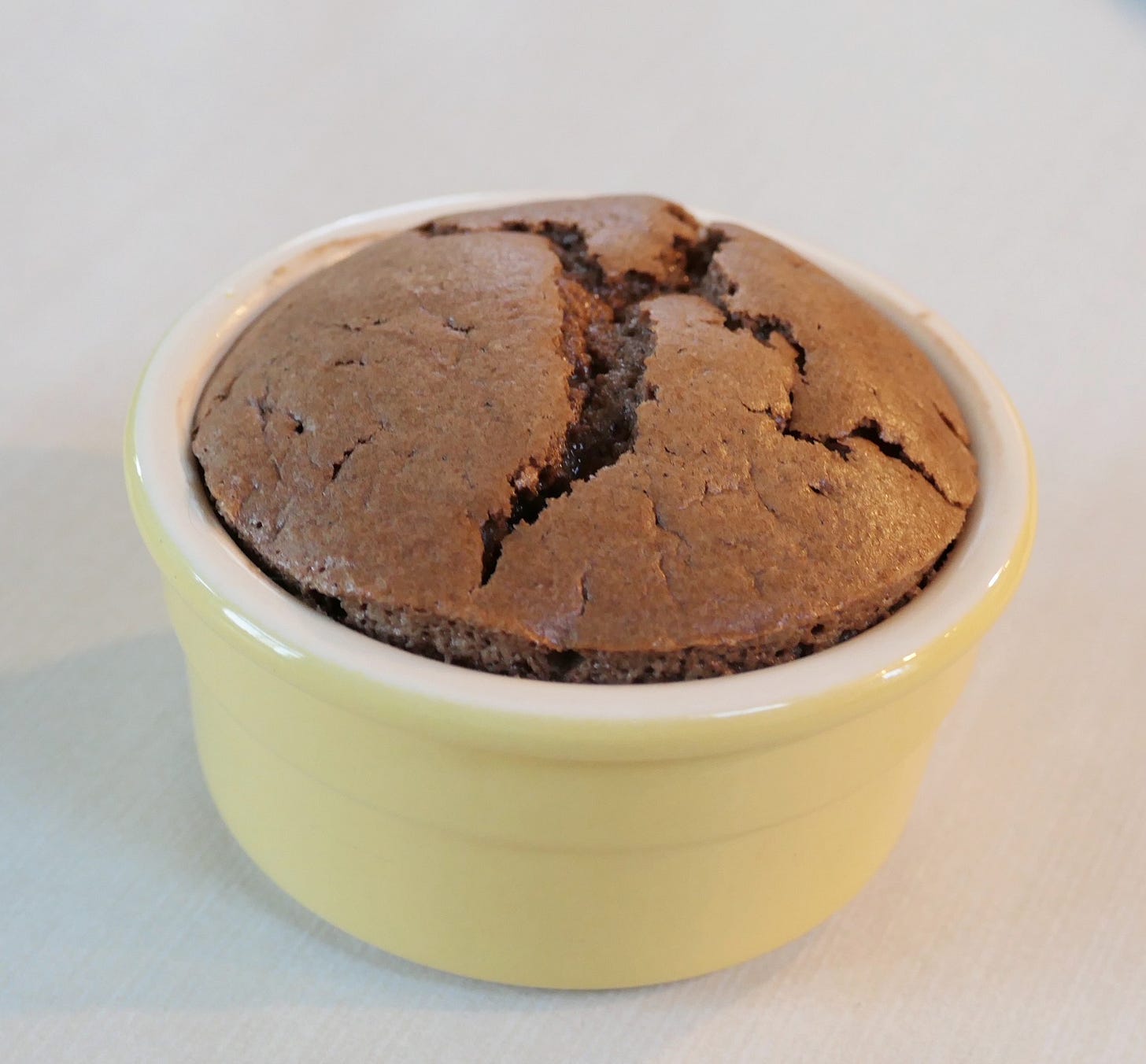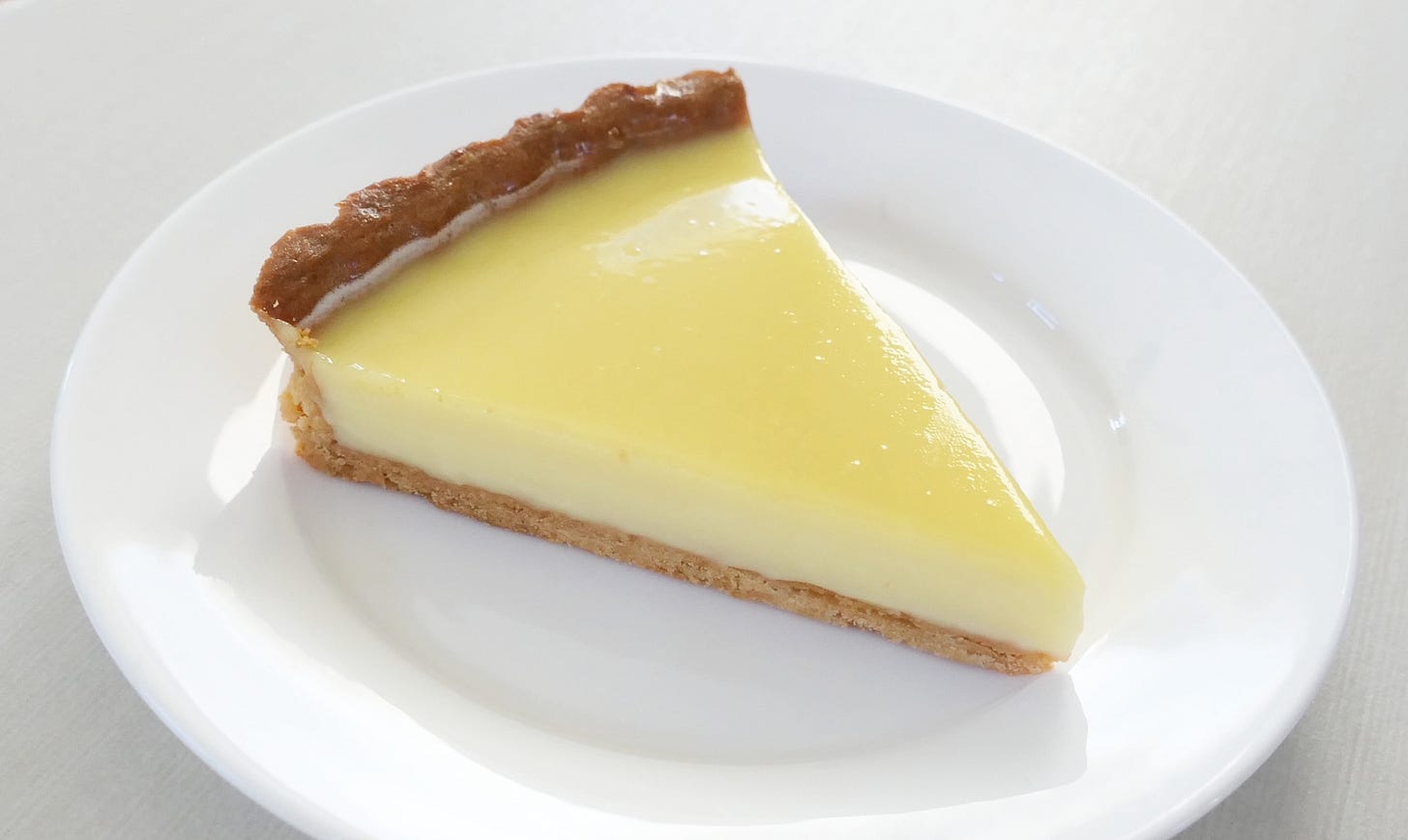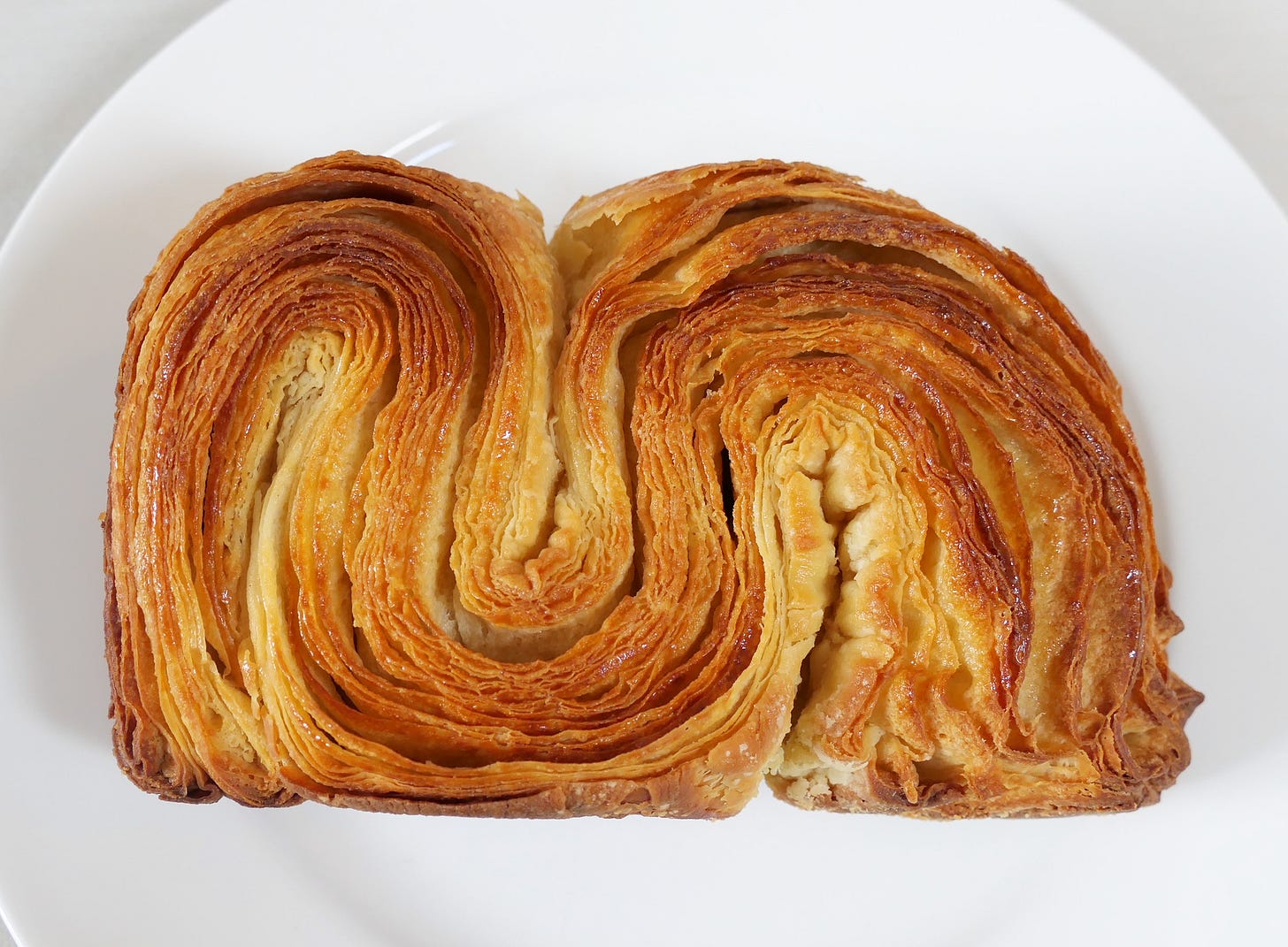Show-stopping techniques & recipes in 'Bake it Better' by Matt Adlard
A Cookbook Review + Lemon Tart recipe
First Thoughts
The photography is minimalist and absolutely perfect. Even the most straightforward recipes look like a pastry school manual or fancy restaurant promotion.
Focus is on French pastry classics like Souffles, Tarts, Madeleines, Crème Brûlée, Macarons, etc. No complaints, though, because I love them all!
There are a couple modern takes that are really cool. Just check out the Tropézienne Cube below.
The Review
‘Bake it Better’ is true to its title, teaching readers techniques and recipes to elevate baking at home. Even though Matt Adlard’s parents owned a Michelin-star restaurant, he stumbled into the world of baking trying to perfect a Nigella chocolate-orange cake recipe. Adlard is a self-taught baker obsessed with learning—and perfecting—the intricacies of French pastry.
The cookbook has a beautiful clean design and unique approach with two “tiers” of recipes. “Tier 1” recipes are not easy but are classic, straightforward recipes. “Tier 2” recipes build on the Tier 1 concept with a slight variation in recipe and additional components such as ganache or praline. This approach is a great way for the reader to have immediate success and then build their skills and confidence over time for even more impressive bakes.
The book felt a little “textbook” and missed an opportunity to inject some of the author’s personality besides the casual notes and advice in the recipe instructions. However, there is a definite attention to detail and appreciation of craftsmanship throughout the book, especially in the photography which made the book feel high-quality and professional. Unfortunately, the recipes specified a lot of extra specialty equipment like pastry rings and specific silicone molds, without any substitutes noted. There were definitely some recipes I was interested in trying (ahem, perfect mini caramel spiral of the Apple Tarte Tatin), but didn’t move forward because of the equipment needed.
Although the pastry classics really shine, there are chapters for Cakes, Pastry, Cookies & Ice Cream, Dough, and Essentials. The Ice Cream section was surprising and cool to see Adlard didn’t stop at ice cream scoops. Tier 2 recipes make Ice Cream Sandwiches, Popsicles, and Caramel Sundae Pots. For me, some of the bread recipes in the Dough section felt out of place since they lacked the show-stopping quality as the rest of the bakes in the book. For example, instead of brown rustic-looking Chia and Black Sesame Shokupan rolls, I would have loved to see the perfect execution of a classic Shokupan. Lastly, there were elementary editing mistakes, like incorrect metric conversions and recipe amounts, which will hopefully be remedied in a future edition.
Recipe Test Results
I made the Chocolate Soufflé, My Dad’s Lemon Tart, and Brioche Feuilletée. All were Tier 1 recipes.
I was a little intimidated to try making a soufflé because my previous attempt at cheese soufflé completely deflated into an omelet. However, this Chocolate Soufflé was the perfect hybrid between chocolate mousse and a delicate cake. It’s a good thing it kept its shape and was delicious because the recipe made a lot more than indicated.
The Tier 2 recipe that builds on the Chocolate Soufflé is a Peach Crumble Soufflé which has crumble, meringue, and is served with a Crème Anglaise.
It’s been my unspoken goal to find the perfect lemon dessert and My Dad’s Lemon Tart (recipe below) is it! You know the recipe is going to be good when the author says the tart is part of the family legacy in the book’s acknowledgements. I couldn’t believe that both the crust and the lemon layer turned out as perfect as in the photos, with a mirror-like shine. Just know that this is not your Midwest Grandma’s punch-you-in-the-face lemon flavor. It is more subtle with a light creamy texture compared to traditional lemon curd. The only minor critique is that the lemon flavor didn’t come through in the crust.
The Tier 2 recipe that builds on the Lemon Tart is Lemon Marmalade Tarts which include an almond cream, lemon marmalade, and whipped vanilla ganache.
Lemon Tart Recipe
Special equipment: Blender or hand blender, 9-inch fluted tart pan with removable base, thermometer, baking tray, blowtorch
Lemon Pastry Crust (for a 9-inch fluted tart pan)
70g powdered sugar
100g unsalted butter, cold and cubed
2 g lemon zest
50g egg yolks
200g all-purpose flour
pinch of sea salt
Egg wash- 40g egg yolks, 10 g heavy cream
In a stand mixer with paddle attachment, mix the sugar, butter and lemon zest and beat for 2-3 minutes until smooth and well-incorporated.
Add the egg yolks and beat for 30 seconds until well-incorporated.
Add the flour and salt and mix for 30 seconds until it forms a dough.
Wrap the dough in plastic wrap and refrigerate for 30 minutes.
Remove the dough from the refrigerator. Lightly flour your work surface and rolling pin and roll the dough into a circle about 0.15 inches thick. If the dough is too sticky, place it back in the refrigerator. If it is resisting rolling or starting to crack, give it a little more time to warm up at room temperature.
Center the dough over your tart plan, gently pressing it into the bottom and the fluted sides.
Run the rolling pin over the top of the pan to trim away the excess dough. Place the pan on a try and freeze for 30 minutes.
Pre-heat the oven to 355°F/180°C.
Remove the pan and tray from the freezer and poke holes evenly across the base of the pastry with a fork.
Place parchment paper on top of the pastry, pressing into the edges. Pour baking beans or rice onto the parchment.
Bake, with the pan still on the tray, for 25 minutes.
After 25 minutes, remove the tray from the oven. Carefully remove the parchment paper and the baking beans or rice. Place the tray back in the oven to bake another 5-10 minutes until golden in color.
Remove the tray from the oven and allow the pastry to cool for 10 minutes.
Brush the entire pastry with the egg wash using a pastry brush.
Place the tray back in the oven to bake another 5-10 minutes until the egg wash is set.
Remove the pan from the oven and allow to cool before filling with the lemon filling (below).
Lemon Filling (for a 9-inch fluted tart pan)
350g eggs
220g sugar
260g heavy cream
4g lemon zest
105g fresh lemon zest
Mix the eggs, sugar, and cream using a blender or hand blender.
Add the lemon zest and juice and quickly blend just enough to mix. It is important to do this step quickly once adding the lemon juice otherwise the mixture could curdle.
Add the lemon filling to a saucepan and heat on medium-low until the mixture reaches 104°F/40°C. Note that the filling still be liquid; the goal here is just to pre-heat the mixture and reduce the cooking time in the oven.
Remove the saucepan from heat. Pour the filling through a sieve and into a bowl. Scoop off any foam off the top of the filling.
Carefully pour the lemon filling into the prepared tart shell until it just reaches the top of the pastry. Use a blowtorch to gently torch the top of the filling where any bubbles appear. If you don’t have a blowtorch, you can do your best to spoon out any bubbles or move to the edge using a spoon.
Bake the tart for 50-55 minutes until the lemon filling is set, but there is still a small wobble at the center.
Remove tart from oven and allow to cool at room temperature for at least an hour. Refrigerate for 3-4 hours. Best if served same day.
The Brioche Feuilletée was the most complex Tier 1 recipe that I tested. It involves laminating, or folding butter into sheets of dough. Even though I’ve made other laminated pastries, it wasn’t easy to follow the instructions without step-by-step photos. Additionally, the layers were rolled very thin which increases the probability for butter to leak out of the layers during baking. I didn’t get the exact number of folds as in the cookbook photo, but flaky layers were still accomplished. The sugar syrup on top gave it a perfect hint of sweetness.
Overall Rating: 4/5
In Matt Adlard’s ‘Bake it Better’ you will find solid recipes that the author has worked to perfect. This book is a great foundation for those looking to make a classic bakery-perfect treat and level up their techniques. The recipe collection is carefully curated to feel cohesive and a convenient reference for French pastry and more.
I feel like I’m on a roll with some good cookbooks and look forward to trying ‘The German Baking Book’ next. German bread and cookies sound perfect for cold winter days in December.








I'm a fan of Matt Adlard and I love this book! Great review 😊